Discover 11 hidden attractions, cool sights, and unusual things to do in Pondicherry (India). Don't miss out on these must-see attractions: French War Memorial, Manakula Vinayagar Temple, and Immaculate Conception Cathedral. Also, be sure to include Basilica of the Sacred Heart of Jesus in your itinerary.
Below, you can find the list of the most amazing places you should visit in Pondicherry (Puducherry).
Table of Contents
French War Memorial
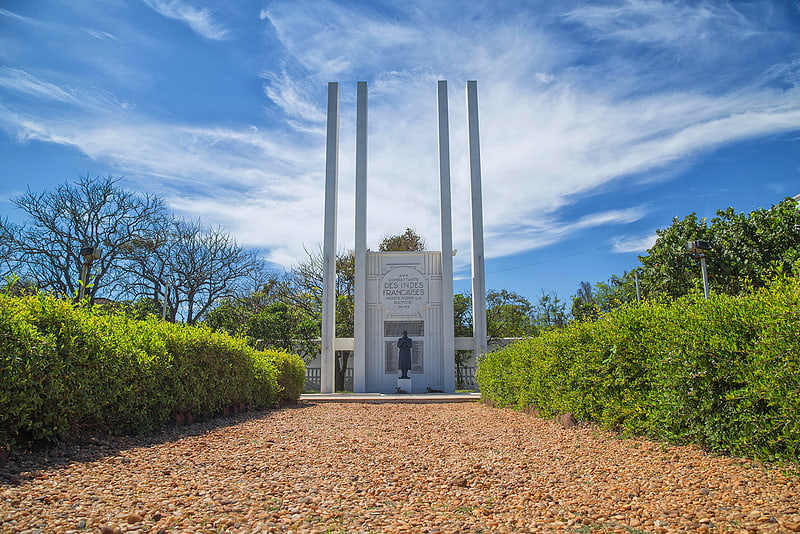
The French War Memorial in Puducherry, India is a war memorial dedicated to residents of French India who died for the country during the First World War. It is on Goubert Avenue in Puducherry, located opposite to the Gandhi statue.[1]
Manakula Vinayagar Temple
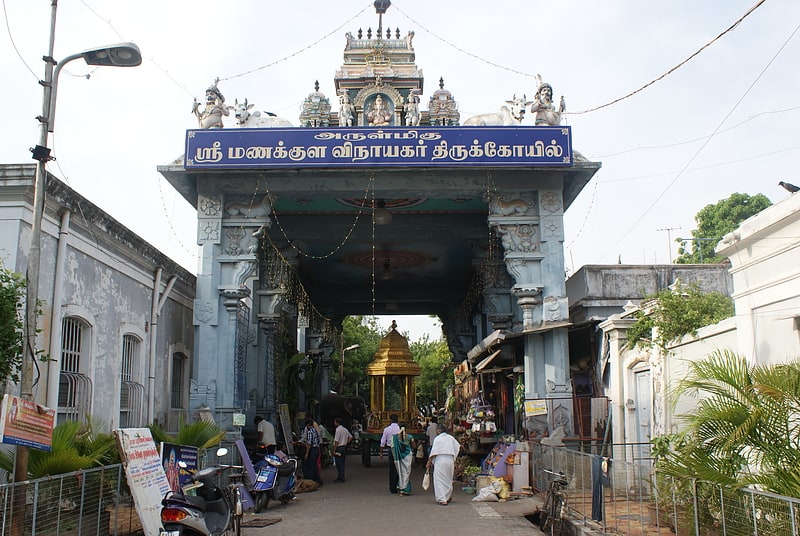
Hindu temple in Pondicherry, India. Manakula Vinayagar Temple is a Hindu temple in the Union Territory of Puducherry, India. Dedicated to the god Ganesa, it is a popular pilgrimage site and tourist destination in Puducherry. The temple is of considerable antiquity and predates French occupation of the territory. During the tenure of Dupleix, there were attempts to destroy the temple, but it was spared owing to strong protests from the Hindu population and the threat of British and Maratha invasion of the territory.[2]
Address: Manakula Vinayagar Koil St, 605001 Puducherry
Immaculate Conception Cathedral
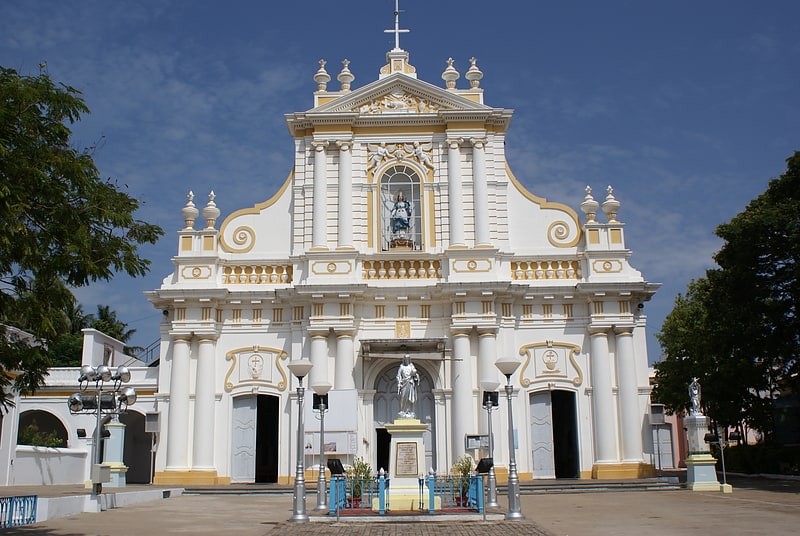
Catholic cathedral in Pondicherry, India. Immaculate Conception Cathedral is the cathedral mother church for the Roman Catholic Archdiocese of Pondicherry and Cuddalore. It is located in the Union territory of Puducherry. The church is also known as Samba Kovil, which is a phonetic corruption of "Saint Paul's Kovil" where "Kovil" means church.[3]
Address: 204, Mission St, 605001 Puducherry
Basilica of the Sacred Heart of Jesus
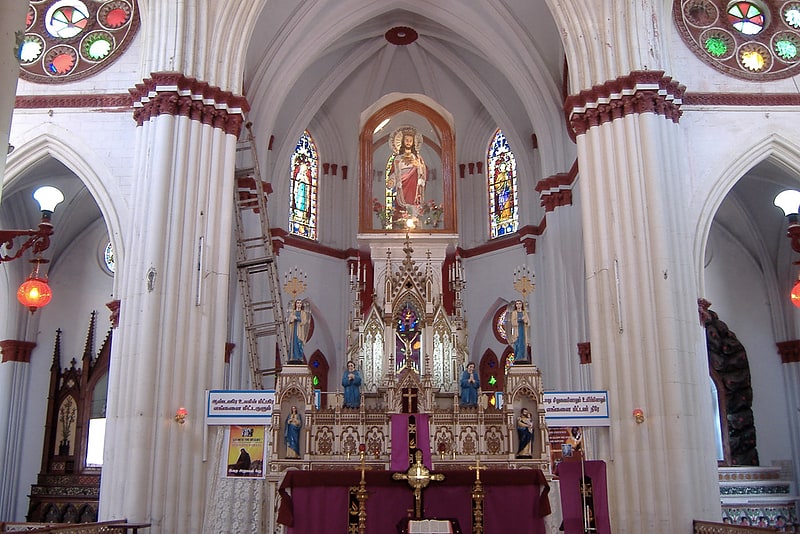
Basilica in Pondicherry, India. Basilica of the Sacred Heart of Jesus, situated on the south boulevard of Pondicherry in Puducherry, India, is an oriental specimen of Gothic Revival architecture. It contains rare stained glass panels depicting events from the life of Christ and saints of the Catholic Church. In recent years it has become one of the famous pilgrimage spots for Christians.[4]
Address: 132, South Boulevard, 605001 Puducherry
Our Lady of Angels Church

Our Lady of Angels Church is the fourth oldest church in Puducherry, a Union territory in South India. The original structure was built in Greco Roman architecture by Napoleon III in 1855, with the architect being Louis Guerre. It is the only church in Pondicherry city that offers mass in three languages namely French, Tamil and English.
Our Lady of Angels Church is a working church with hourly prayer and daily services and follows Roman Catholic sect of Christianity. The chapel was controlled by Capuchin priests, Holy Spirit Fathers subsequently and finally during 1887 changed hands to Foreign Mission Fathers from Paris. It is one of the most prominent landmarks in Puducherry and faces the Bay of Bengal. The Church is locally called Dumas Church since it is located in Dumas Street in White Town.[5]
Kameeswarar temple
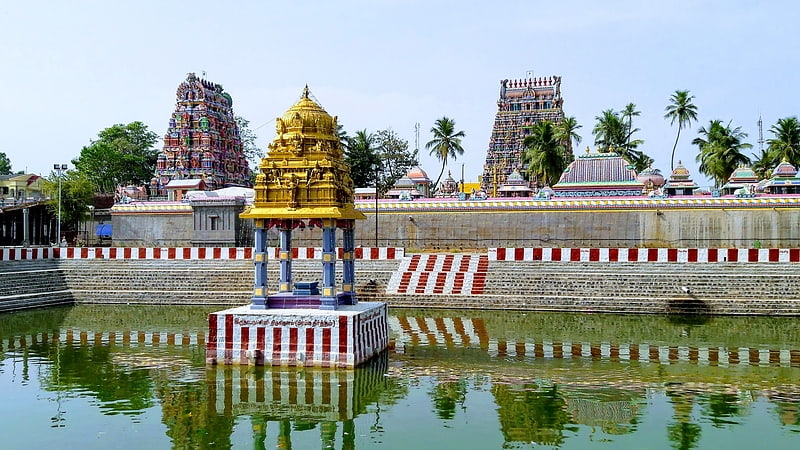
Kameeswarar Temple is a Hindu temple dedicated to the deity Shiva, located in Villianur, a town in the South Indian union territory of Puducherry. Shiva is worshiped as Kameeswarar, and is represented by the lingam. His consort Parvati is depicted as KokilambaAmman.
The temple complex covers an area of two acres and all its shrines are enclosed with concentric rectangular walls. The temple has a number of shrines, with those of Kameeswarar, his consort KokilambaAmman and Ranganathar being the most prominent.
The temple has six daily rituals at various times from 6:00 a.m. to 8:30 p.m. and many yearly festivals on its calendar. Brahmotsavam, the prime festival during the Tamil month of Aadi (July - August) is the most prominent festival celebrated in the temple.
The original complex is believed to have been built by Cholas, with later additions from different ruling dynasties. In modern times, the temple is maintained and administered by the Hindu Religious and Charitable Endowments Department of the Government of Puducherry.[6]
Ousteri Lake

Ousteri Lake is a lake in the union territory of Puducherry, state of Tamil Nadu. This lake is also called as Ossudu Lake as it is located in the village named Ossudu.
The lake extends to about 800 hectares in which 390 hectares lies in Puducherry and the rest in Tamil Nadu. It is the largest lake of Puducherry.[7]
Romain Rolland Library
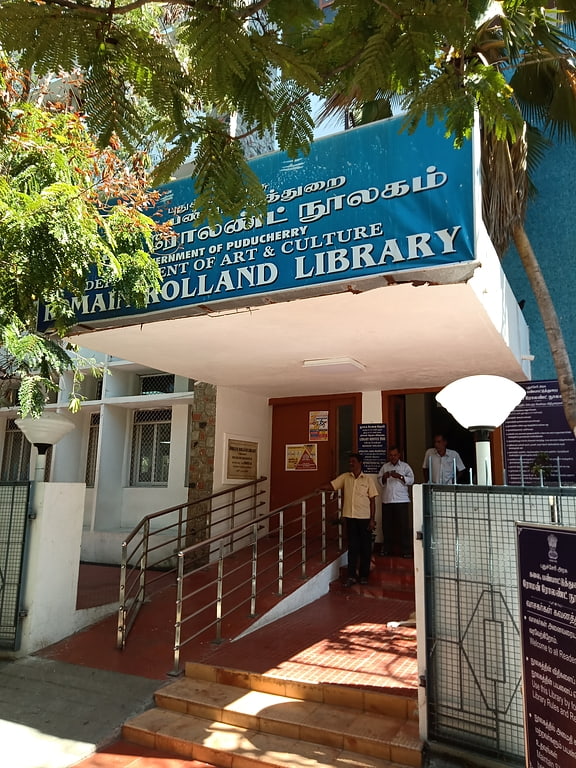
Library in Pondicherry, India. The Romain Rolland Library, founded in 1827 as the Bibliothèque Publique, is one of the oldest Libraries of India located in the union territory of Puducherry. In the year 1966 when the birth centenary of the Great French Scholar, Romain Rolland who was also a contemporary and a close friend of Mahatma Gandhi was celebrated, the Library was renamed after him and ever since it is known as ‘Romain Rolland Library’.[8]
Arikamedu
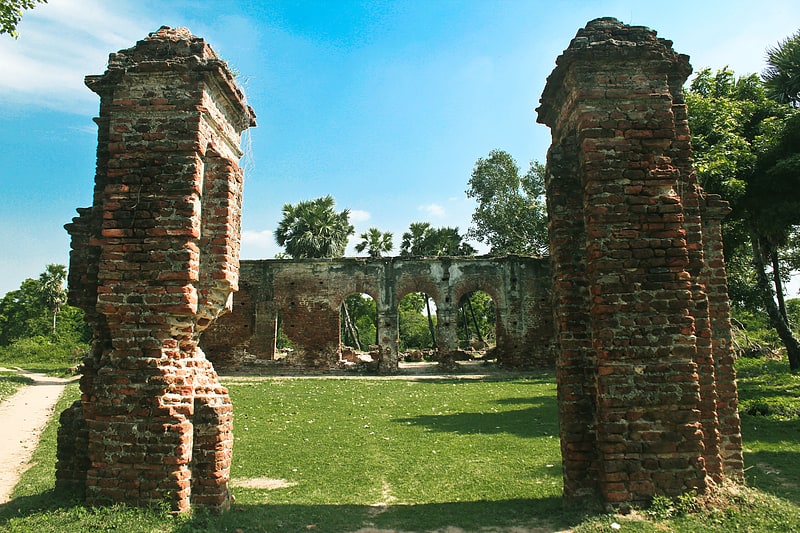
Archaeological site with Roman links. Arikamedu is an archaeological site in Southern India, in Kakkayanthope, Ariyankuppam Commune, Puducherry. It is 4 kilometres from the capital, Pondicherry of the Indian territory of Puducherry.
Sir Mortimer Wheeler 1945, and Jean-Marie Casal conducted archaeological excavations there in 1947–1950. The site was identified as the port of Podouke, known as an "emporium" in the Periplus of the Erythraean Sea and Ptolemy. Digs have found Amphorae, Arretine ware, Roman lamps, glassware, glass and stone beads, and gems at the site. Based on these excavations, Wheeler concluded that the Arikamedu was a Greek (Yavana) trading post that traded with Rome, starting during the reign of Augustus Caesar, and lasted about two hundred years—from the late first century BCE to the first and second centuries CE. Subsequent investigation by Vimala Begley from 1989 to 1992 modified this assessment, and now place the period of settlement from the 2nd century BCE to the 8th century CE.
Significant findings at Arikamedu include numerous Indo-Pacific beads, which facilitated fixing the period of its origin. Red and black ceramics—known as megalithic stones or Pandukal in Tamil meaning "old stones" and used to mark graves—have existed at the site even prior to dates of the trading post, and also in later periods.[9]
Auroville
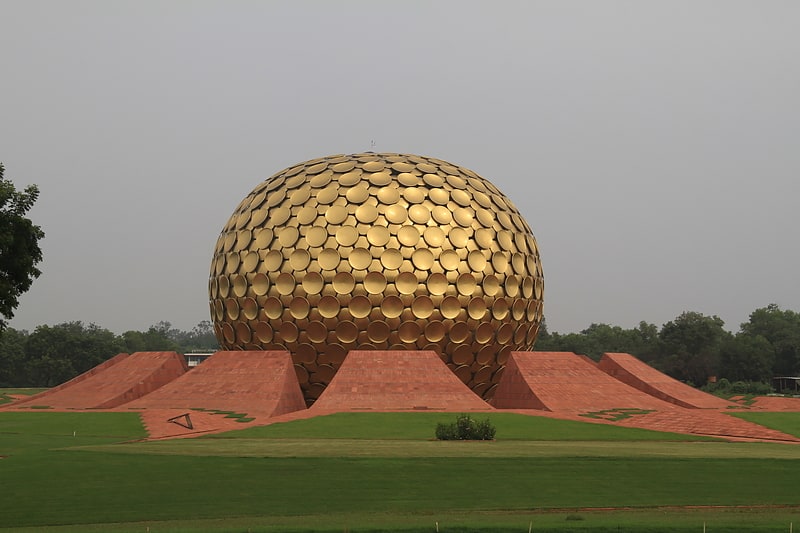
Also known as: ओरोविल
Township in India. Auroville is an experimental township in Viluppuram district, mostly in the state of Tamil Nadu, India, with some parts in the Union Territory of Pondicherry in India. It was founded in 1968 by Mirra Alfassa and designed by architect Roger Anger.[10]
Sri Aurobindo Ashram
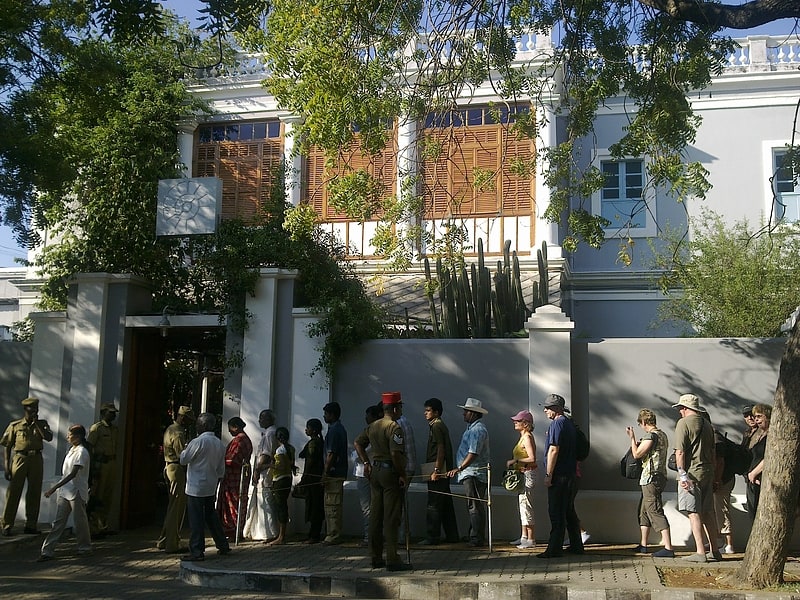
Ashram in Pondicherry, India. The Sri Aurobindo Ashram is a spiritual community located in Pondicherry, in the Indian territory of Puducherry. The ashram grew out of a small community of disciples who had gathered around Sri Aurobindo after he retired from politics and settled in Pondicherry in 1910. On 24 November 1926, after a major spiritual realization, Sri Aurobindo withdrew from public view in order to continue his spiritual work. At this time he handed over the full responsibility for the inner and outer lives of the sadhaks and the ashram to his spiritual collaborator, "The Mother", earlier known as Mirra Alfassa. This date is therefore generally known as the founding-day of the ashram, though, as Sri Aurobindo himself wrote, it had "less been created than grown around him as its centre."[11]